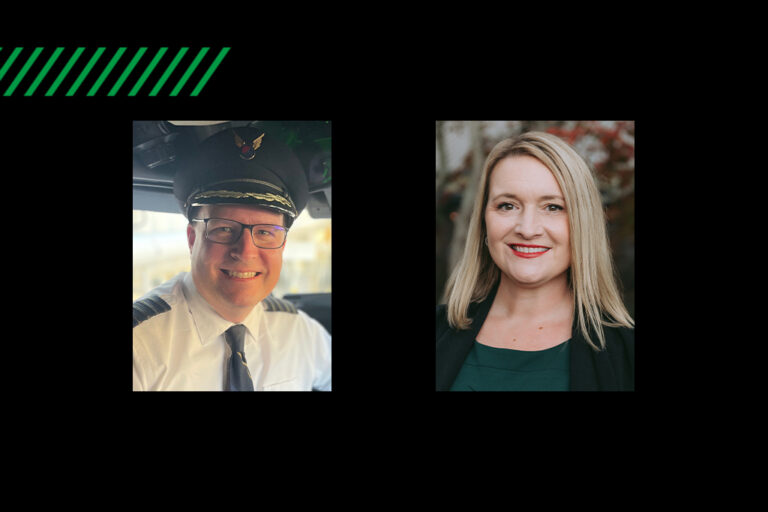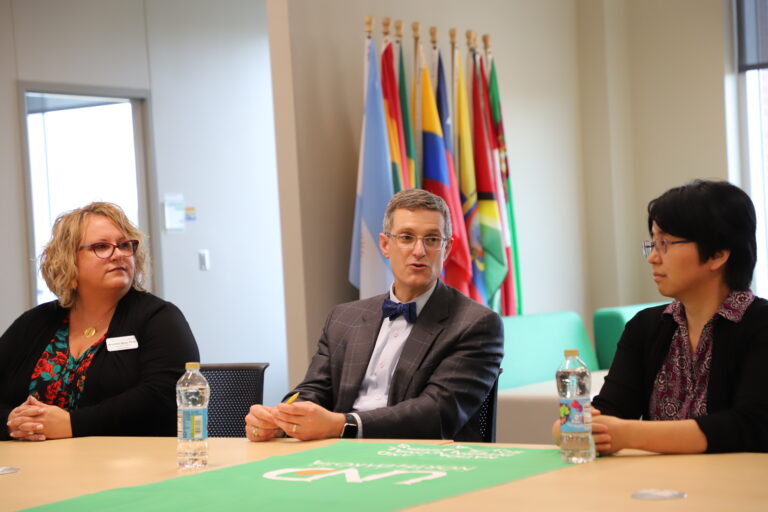Bishop takes knight
INMED alum Charity Bishop describes the challenges of rural medicine, especially in a pandemic

You never know the impact you have on other lives.
Just ask Charity Bishop, M.D.
“I once taught an MCAT (Medical College Admission Test) class through [Indians into Medicine] in the summer, and years later, when I was a resident in New Mexico, a medical student walked up to me and said, ‘Charity, do you remember me?'” recalled the 2015 graduate of the UND School of Medicine & Health Sciences from her home in Albuquerque. “She had been in my MCAT class and has since graduated from University of New Mexico School of Medicine too and is now practicing with Indigenous communities in Alaska.”
This is the sort of connection to community that brought Bishop to UND so many years ago—and what keeps her interested in both rural medicine and Indigenous health today.
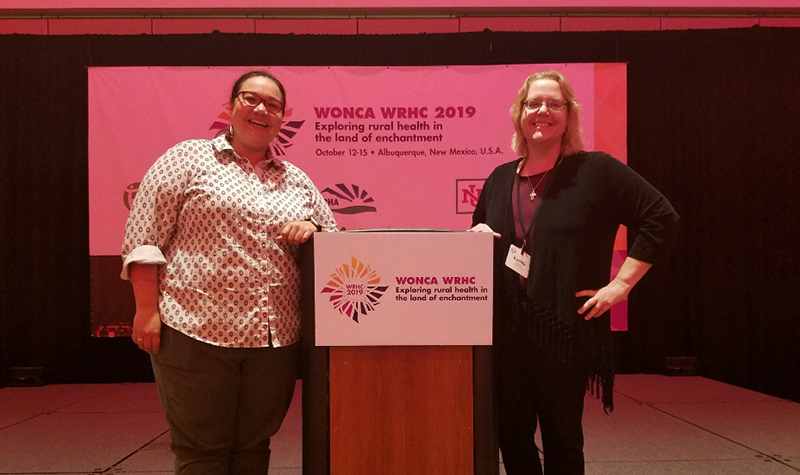
Go north! To Dakota!
After all, it was that sort of connection that was modeled for Bishop.
“Charity worked super-hard throughout year four and managed to match into a Family Medicine residency in Albuquerque,” explained Kamille Sherman, M.D., who served as a mentor of sorts to Bishop at UND. “When I had an opportunity to visit her in Albuquerque in October 2019, at which time she was an attending physician, seeing her succeed in her corner of the world was a ‘full-circle’ moment for me, as an educator. She is an INMED graduate who is able to make a difference near the area where she grew up. One patient encounter at a time.”
A member of the Akimel O’otham tribe and Arizona native, Bishop had always been interested in medicine. And whether it was wanderlust or a sort of rebellion against her parents, the 18-year- old Bishop made it a point to start college almost as far away from home as possible—at Mount Holyoke College in Massachusetts.
After her undergraduate stint on the East Coast, though, Bishop felt the pull of more sparsely populated places. So she enrolled in the MD program at the SMHS, finding herself increasingly interested in not only Indigenous health, but rural medicine.
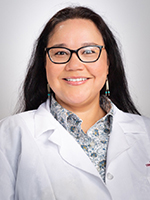
As it turned out, ending up in North Dakota sort of was like coming home.
“I was mostly interested in rural medicine because many native communities are rural,” continued Bishop, who participated in UND’s Rural Opportunities in Medical Education (ROME) program in Dickinson, N.D. “In rural settings I think there is often a broader scope of practice. There is not usually easy access to specialists, so you end up managing more yourself. I thought getting training in rural medicine would help equip me to practice this way.”
It was an intense and eye-opening third year, said Bishop, who laughed that she essentially “lived” in the Dickinson hospital for six months.
Nevertheless, North Dakota “was actually an ideal place to learn since most patients and physicians were excited to see, teach, and work with a medical student,” Bishop said. “I think someday I will practice in a rural setting, but at this time in my career I am working on growing and supporting Native Medical students.”
INMED calling
This, too, was part of UND’s appeal.
“I had gone to a small college on the East Coast where there were not very many Indigenous students,” noted Bishop from her office at the University of New Mexico (UNM) in Albuquerque, where she completed her family medicine residency. “I was excited to go to a place that had more of an Indigenous community—and students.”
And if the former student at the start of this story is any indication, that community is likewise glad Bishop ended up at UND.
“I know several graduates of the UND School of Medicine & Health Sciences who started as INMED summer institute students in junior high and went all through the program, becoming doctors! I think those doctors are true heroes. It also shows that pipeline programs do work.”
As Bishop put it, UND’s dual emphasis on Indigenous training and rural and family medicine are vital to the lives of American Indians, who even in the 21st century face stark disparities in health outcomes, whether the condition in question is cancer or coronavirus.
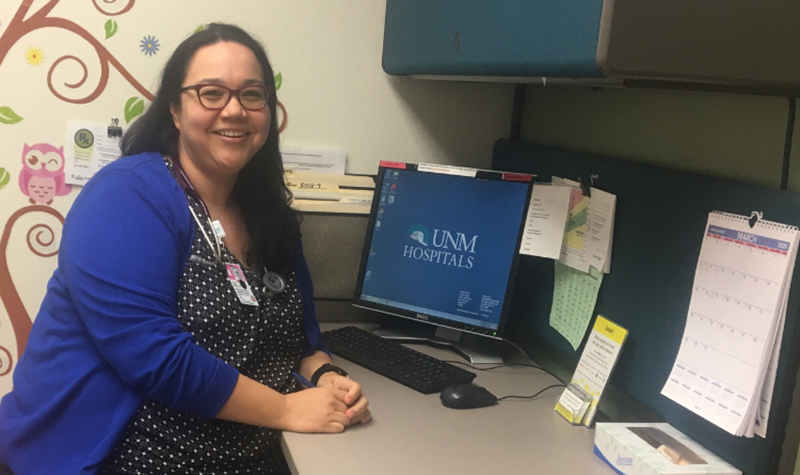
COVID-19 on the reservation
To that point, Bishop is also dealing with a COVID-19 pandemic that has ravaged American Indian communities in New Mexico. At the time of this writing, the total number of confirmed COVID cases in New Mexico was 7,000+, with well over 300 deaths.
But such statistics are especially high for the Navajo Nation, says Bishop, which spans New Mexico, Arizona, and Utah.
“Native American people account for more than 50 percent of the total cases in New Mexico, despite being only about 10 percent of the state’s population,” Bishop sighed. “There are health disparities on the reservation that existed prior to COVID-19, but this is exacerbating it. And it’s multi-factorial in origin—some is communication, some is resources. Many of those families are multi-generational [with persons of all ages in a home], plus many homes on the reservation don’t have running water. That makes it pretty hard to wash hands.”
Such economic disparities contribute to COVID on reservations, said Bishop, and make economic development there quite complex. Still, things might be even worse if New Mexico was less proactive than it was. Bishop said that public health was a major statewide focus even before the pandemic—and that the state had a stay-home order and social distancing back in early March, before much of the nation got in gear.
“Access to healthy food impacts health disparities as well, and many reservations are food deserts,” she added. “I am trying to reduce those health disparities by working with Indigenous medical students, and we received a grant from [UNM] to work on an indigenous health curriculum for the medical school here.”
All of which is good news for not only the Indigenous population in New Mexico, but the entire state.
“Both North Dakota and New Mexico are rural states with a few bigger cities, so patients often have to travel to see a specialist,” Bishop concluded. “Primary care is important everywhere, but it is vital in states like ours.”
Especially in a time of pandemic.
About the author:
 Brian James Schill is the assistant director of the Office of Alumni and Community Relations at the University of North Dakota School of Medicine & Health Sciences.
Brian James Schill is the assistant director of the Office of Alumni and Community Relations at the University of North Dakota School of Medicine & Health Sciences.
